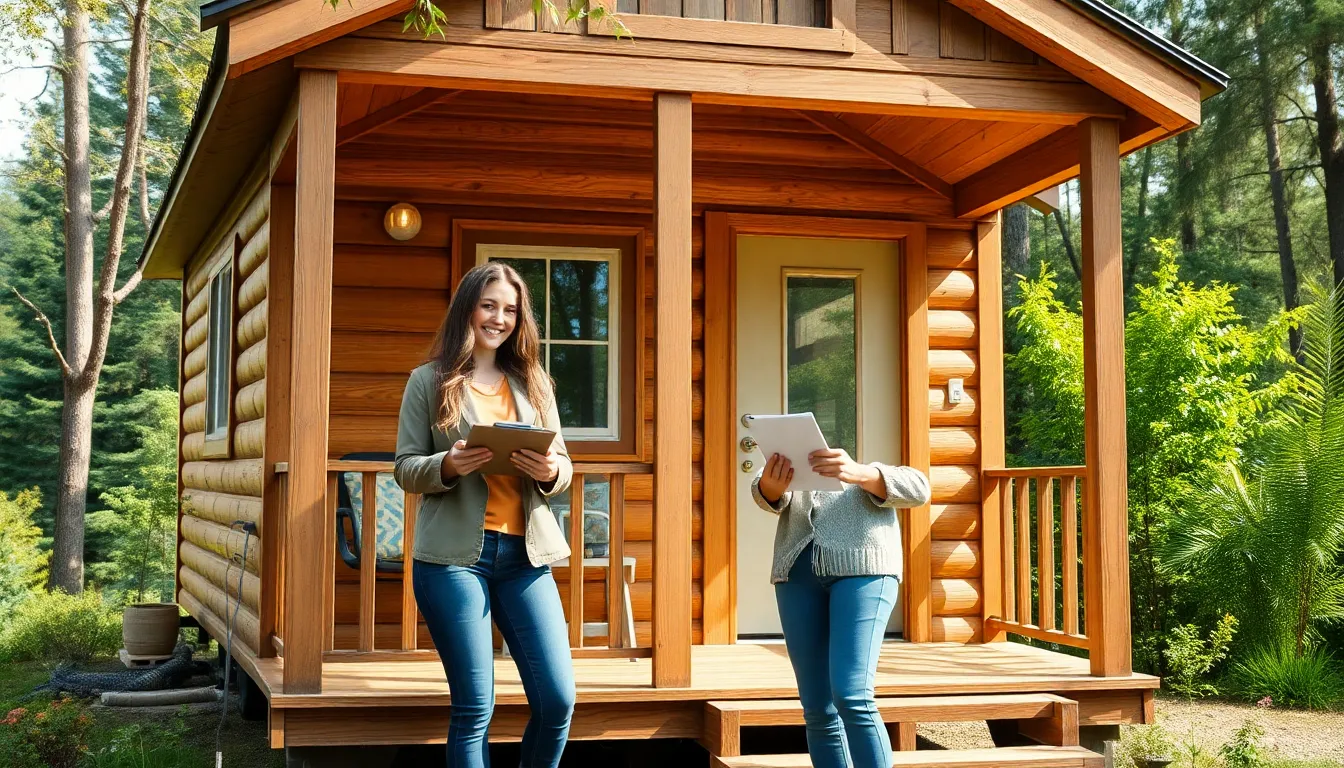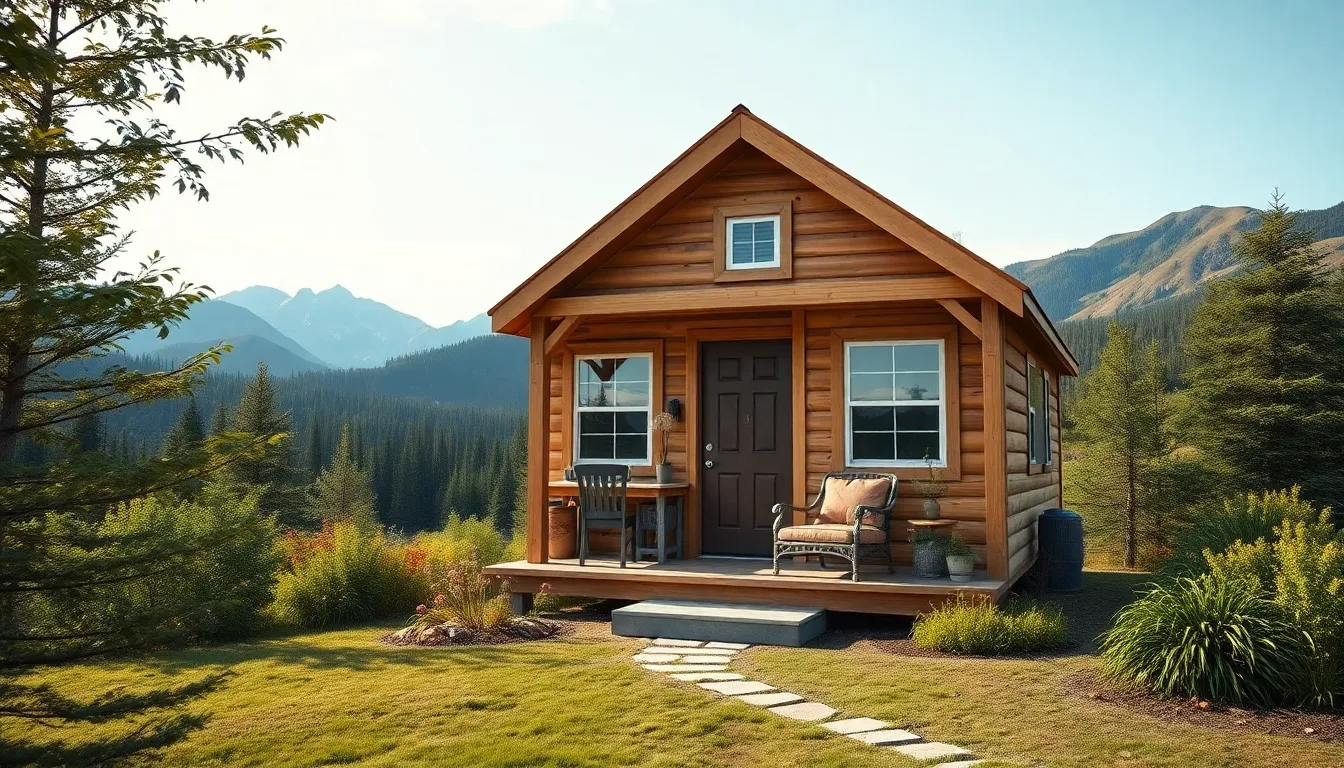Table of Contents
ToggleIn a world where bigger often means better, tiny houses are flipping the script and proving that less can indeed be more. These pint-sized dwellings aren’t just cozy retreats; they’re also a goldmine for savvy investors looking to cash in on the booming rental market. Imagine sipping coffee on a tiny porch, while your bank account grows bigger with every guest that checks in.
Understanding Tiny House Rental Income
Tiny house rental income reflects the financial gain from renting out compact homes. Investors leverage the appeal of tiny living to attract tenants seeking unique and affordable accommodations.
What Is Tiny House Rental Income?
Tiny house rental income refers to the revenue generated from leasing small residential spaces, typically less than 400 square feet. This income can come from various platforms like Airbnb or long-term leases. Successful tiny house rentals often see nightly rates ranging from $75 to $150, depending on location and amenities. Understanding localized rental markets helps owners maximize their earnings. Many tiny house owners also experience lower operational costs compared to traditional rental properties, making the venture financially appealing.
Benefits of Investing in Tiny Houses
Investing in tiny houses provides several advantages for property owners. Low maintenance requirements lead to reduced expenses over time. Additionally, high demand for unique vacation experiences often results in consistent occupancy rates. Many tiny houses offer flexibility in rental terms, allowing for short-term or long-term agreements based on market conditions. Property investors can also benefit from tax deductions on mortgage interest and depreciation. Overall, tiny house investments appeal to individuals seeking passive income opportunities in a growing market.
Setting Up Your Tiny House for Rental
Setting up a tiny house for rental requires careful planning. Location and amenities play essential roles in attracting renters.
Choosing the Right Location
Selecting a prime location significantly impacts rental income. Proximity to attractions, scenic views, and access to transport enhance appeal. Areas with high tourist traffic or outdoor activities can yield higher nightly rates. Research local regulations related to short-term rentals to ensure compliance. Evaluating neighborhoods for safety and accessibility also matters. Focus on regions popular for unique vacation experiences to maximize occupancy rates.
Essential Amenities for Renters
Furnishing a tiny house with essential amenities improves rental desirability. Focus on comfort by incorporating quality bedding, kitchen appliances, and functional furniture. Wi-Fi access is almost mandatory for modern travelers. Including eco-friendly items, such as solar lights and composting toilets, appeals to environmentally conscious guests. Offering outdoor spaces enhances relaxation, such as porches or fire pits. Make sure to provide essentials like toiletries and complimentary snacks, creating a welcoming atmosphere.
Marketing Your Tiny House
Marketing a tiny house effectively targets potential renters. Understanding the right strategies enhances visibility and profitability.
Effective Online Platforms
Airbnb and Vrbo stand out as popular platforms for tiny house rentals. Utilizing these sites increases exposure to a wide audience. Local listing services such as Craigslist can also attract nearby renters. Social media channels, including Instagram and Facebook, enable showcasing unique features. An integrated approach across multiple platforms maximizes reach and potential bookings. Monitoring reviews on these sites helps maintain a positive reputation and address concerns promptly.
Creating Compelling Listings
Compelling listings capture attention and drive inquiries. High-quality photos highlight the tiny house’s best features, making them vital. Descriptive texts that emphasize unique amenities and nearby attractions engage prospective renters. Utilizing keywords related to tiny house living strengthens search visibility. Provide detailed information about the space’s layout and capacity, ensuring clarity for potential guests. Clear pricing, flexibility on rental terms and an engaging property description further enhance interest and booking rates.
Financial Considerations
Understanding financial aspects is crucial for maximizing tiny house rental income. This section explores initial investment and ongoing costs, alongside effective pricing strategies.
Initial Investment and Costs
Initial costs include purchasing the tiny house itself, which can vary widely based on design and location. He or she must also account for land expenses, whether renting or buying a lot. Utilities often require setup, including electricity, water, and sewage connections. Renovations or furnishings contribute additional costs; quality bedding, kitchen appliances, and eco-friendly amenities elevate appeal for renters. Maintenance expenses, though generally lower than larger properties, still arise. Budgeting for property insurance and local taxes ensures comprehensive financial planning. Consulting with local authorities about zoning regulations may also incur costs, but this effort safeguards future rental opportunities.
Pricing Strategies for Your Rental
Effective pricing is key to attracting guests and optimizing income. Competitive analysis helps establish a baseline; it’s essential to research similar rentals in the area. Dynamic pricing models allow flexibility based on demand fluctuations, holidays, or local events. Setting nightly rates between $75 and $150 can yield significant returns when positioned correctly within market ranges. Offering discounts for longer stays or last-minute bookings encourages increased occupancy. Clear communication about all fees, including cleaning and service charges, builds trust with potential renters. Marketing strategies highlight unique features that justify premium pricing, helping maximize overall rental revenue.
Managing Your Tiny House Rental
Managing a tiny house rental successfully involves maintaining open communication with guests and ensuring the property remains in excellent condition.
Guest Communication Tips
Establish clear lines of communication before booking to address inquiries promptly. Use automated messages to convey essential information, such as check-in procedures and house rules. Always respond quickly to guest questions during their stay, as this enhances satisfaction and encourages positive reviews. Personalizing messages increases the likelihood of repeat bookings. Follow up after their stay to thank them and invite feedback on improving the experience. Creating a guest book inside the tiny house with local recommendations adds a personal touch and showcases hospitality.
Maintenance and Upkeep
Routine maintenance is crucial for preserving the rental’s appeal. Schedule regular inspections to check for wear and tear, as proactive measures can prevent costly repairs. Establish a cleaning schedule between bookings to ensure the home meets high cleanliness standards. Minor repairs, like plumbing or electrical issues, should get addressed immediately to avoid complications. Investing in durable materials can reduce maintenance frequency and prolong the tiny house’s lifespan. Keep a list of reliable local service professionals for quick resolutions if needed.
Conclusion
Tiny house rentals present a unique opportunity for investors looking to diversify their income streams. With the right approach to location and amenities, these compact homes can generate significant revenue. As demand for unique travel experiences continues to rise, tiny houses stand out as attractive options for vacationers and long-term renters alike.
By implementing effective marketing strategies and maintaining clear communication with guests, owners can enhance their rental success. The potential for passive income combined with low maintenance costs makes tiny house investments appealing in today’s real estate market. As the trend grows, those who seize the opportunity may find themselves reaping financial rewards while contributing to the evolving landscape of housing.








